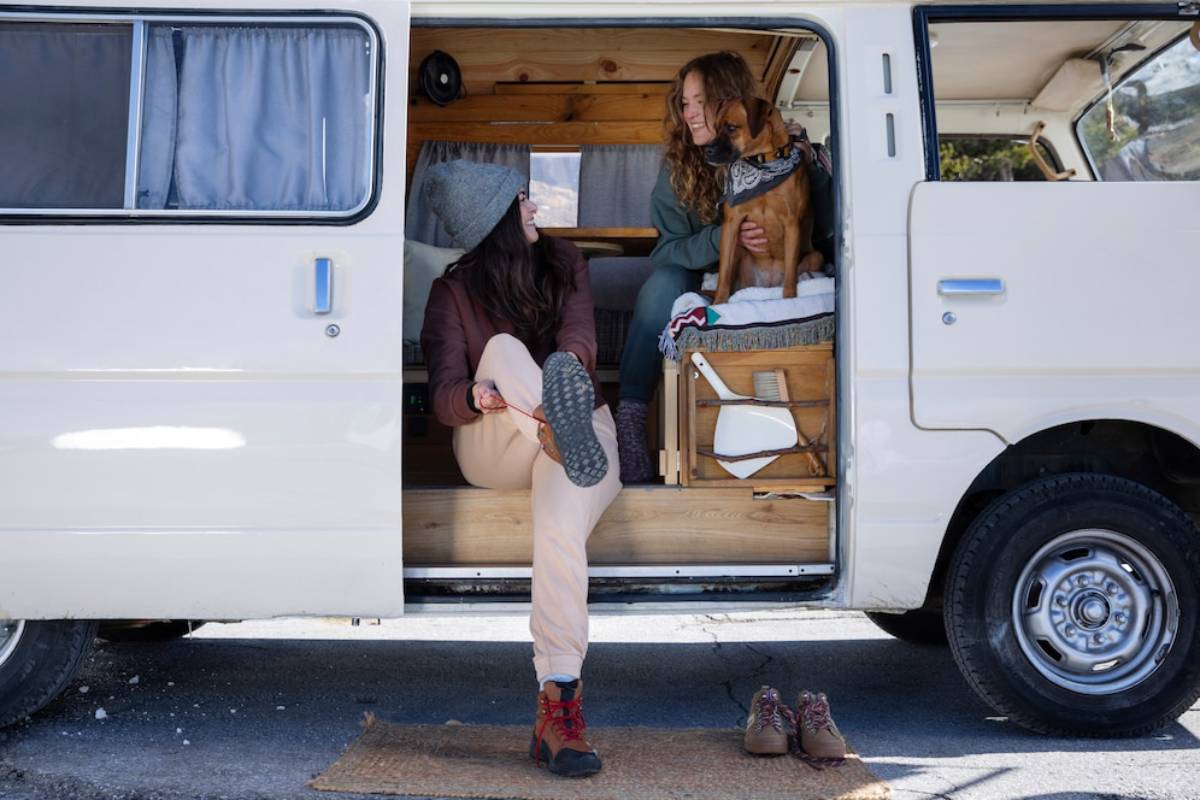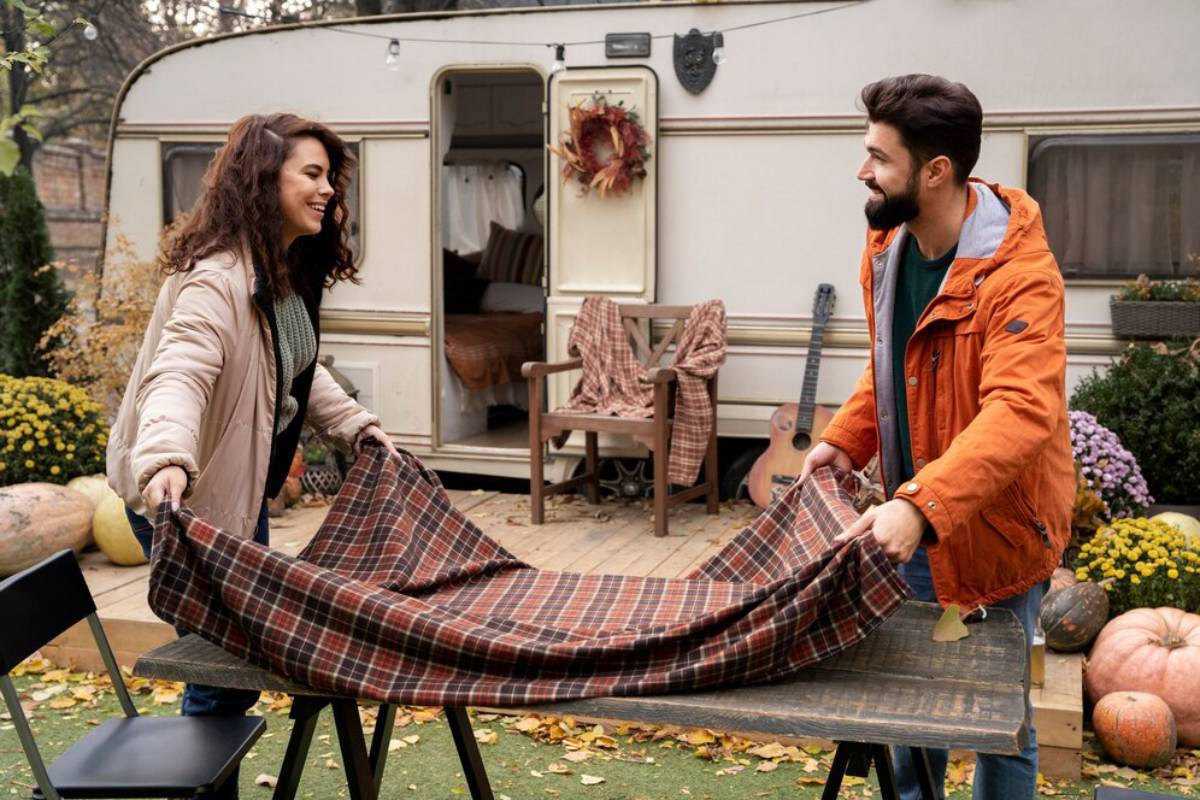
How to Convert a Van into a Cozy Home on Wheels
Van life has recently attracted adventurers and minimalists. Converting a van into a cosy home on wheels offers freedom, simplicity, and self-sufficiency. A good van conversion lets you enjoy tiny home travel and the perks of mobile living. In this guide, we’ll look at how to turn a regular van into a cosy, functional home. We’ll cover key steps, expert tips, and important things to keep in mind. This way, your journey will be smooth like the open road.
Pro Tips: Choosing the Right Van and Assess your needs. If you plan on travelling full-time, opt for a larger van with more amenities.
Guide for Planning Your Van Conversion Adventure:
- Plan Ahead: Book tickets to popular sites and festivals early to avoid disappointment.
- Dress the Part: Consider wearing Victorian-inspired clothing to enhance the immersive experience.
- Embrace Curiosity: Explore beyond the main attractions to uncover hidden Victorian gems.
Important Tip:
Many Victorian hotels still have their original look and feel. This offers guests a special trip back in time.
Key Benefits of Van Conversion: Why It Matters

Converting a van into a home is more than just a trend—it’s a lifestyle shift that opens the door to new experiences. Before your road trip, check all systems, including electrical, plumbing, and mechanical parts. Here’s why van conversion matters:
1. Freedom and Flexibility
Van life offers the ultimate flexibility. Imagine waking up to a new view every day—whether it’s a sandy beach, a mountain range, or a serene forest. You aren’t stuck in one place. This lets you be spontaneous and discover new spots your way.
2. Minimalist and Sustainable Living
Downsizing to a van encourages minimalism by focusing on essentials and eliminating clutter. A smaller living space naturally reduces consumption, lowering your environmental impact. Additionally, incorporating solar panels and eco-friendly materials makes your journey more sustainable.
3. Cost-Effective Housing Solution
Converting a van can be a cost-effective option as property prices rise. The upfront cost might look steep, but it cuts out monthly rent and utility bills. This makes it a smart, long-term choice for saving money.
Step-by-Step Guide to Van Conversion

Step 1: Choosing the Right Van
The foundation of your van life begins with selecting the right vehicle. Consider factors like:
- Size and Space: Bigger vans like the Mercedes-Benz Sprinter and Ford Transit have lots of room. In contrast, smaller options like the Volkswagen Transporter are easier to manoeuvre.
- Reliability: Prioritize models with a reputation for durability and low maintenance.
- Fuel Efficiency: Better mileage reduces long-term costs and extends your travel range.
Pro Tip: Assess your needs. If you plan on travelling full-time, opt for a larger van with more amenities.
Step 2: Designing Your Layout
A functional layout maximises space and enhances comfort. Consider including:
- Sleeping Area: A fixed bed for comfort or a foldable bed to save space.
- Kitchen Unit: Compact with a stove, sink, and counter space.
- Storage Solutions: Use under-bed storage, vertical shelves, and overhead compartments.
- Seating and Workspace: Consider a swivel seat that doubles as a dining and work area.
Use graph paper or digital design tools like SketchUp to map out your ideal layout.
Step 3: Insulating the Interior
Proper insulation is essential for maintaining a comfortable temperature in all seasons. Popular insulation materials include:
- Sheep Wool: Natural and breathable, ideal for moisture control.
- Foam Board: Lightweight with high thermal resistance.
- Spray Foam: Provides a tight seal but requires a professional application.
Insulate the walls, floor, and ceiling. This keeps your home warm in winter and cool in summer.
Step 4: Installing Electrical Systems
Powering your van involves careful planning to ensure sustainability and convenience. Key components include:
- Battery System: A deep-cycle battery or lithium battery to store energy.
- Solar Panels: Harness solar energy to keep your systems running efficiently.
- Inverter: Converts DC power to AC for appliances.
- Charge Controller: Regulates the power from solar panels to prevent overcharging.
Calculate your daily power usage and design a system that meets those needs.
Step 5: Building the Interior
Once the foundation is ready, it’s time to bring your interior to life:
- Flooring: Use vinyl or laminate for durability and easy cleaning.
- Bed Frame and Seating: Opt for foldable or multi-functional furniture to maximise space.
- Kitchen and Storage: Create small units with storage spaces. Make sure fixtures are secure to handle vibrations from travel.
Add personal touches with decor, curtains, and lighting that reflect your style.
Step 6: Plumbing and Water Systems
For a fully functional space, install a basic plumbing system:
- Water Tank: Choose between fresh, grey, and black water tanks.
- Water Pump: Provides pressure for sinks and showers.
- Drainage System: Ensure all pipes and fittings are securely installed to prevent leaks.
A simple, compact plumbing system keeps your van clean and functional.
Additional Expert Tips and Common Mistakes to Avoid
Plan for the Future
Design your layout with future upgrades in mind. As your needs evolve, consider adding extra storage or expanding your power system.
Prioritise Safety
Ensure all installations, especially electrical and gas systems, adhere to safety standards. Consider hiring professionals for critical systems to avoid hazards.
Test Systems Before Hitting the Road
Test all electrical, plumbing, and mechanical systems before long trips. Identifying issues early prevents costly breakdowns later.
Avoid Overloading
Be mindful of the weight limit of your van. Overloading can strain the engine, compromise safety, and affect fuel efficiency.
Advanced Insights and Expert Recommendations
1. Incorporate Smart Technology
Add smart home features like remote lighting control, climate management, and energy monitoring. These upgrades enhance convenience and make van life more efficient.
2. Focus on Sustainability
Opt for eco-friendly materials and renewable energy sources. Solar panels, composting toilets, and water-saving systems contribute to a more sustainable lifestyle.
3. Personalize for Comfort
Infuse your van with elements that reflect your personality. Make a comfy reading nook. Put in blackout curtains. Or add a retractable awning for relaxing outside.
Frequently Asked Questions (FAQs)
1. How much does a typical van conversion cost?
When it comes to van conversions, costs can be all over the map. Size, materials, and features dance in a delicate balance of price. A DIY adventure can set you back anywhere from $10,000 to $20,000. Meanwhile, if you opt for professional finesse, be prepared for budgets soaring beyond $50,000.
2. How long does a van conversion take?
A DIY conversion is a journey that spans 3 to 6 months. The timeline dances to the rhythm of your project’s complexity. It also hinges on your available commitment. Meanwhile, professional conversions execute a quick step, finishing in just 1 to 2 months.
3. Is it legal to live in a converted van?
Absolutely! Living in a transformed van is perfectly legal—it’s your mobile abode. However, the rules on parking and overnight stays change from one place to another. So, before you settle in for the night, do your homework. Research local regulations to dodge any pesky fines or unwelcome towing surprises!
4. What are the best vans for conversion?
When it comes to favourites, the Mercedes-Benz Sprinter, Ford Transit, and Ram ProMaster reign supreme, these champions of the road are celebrated for their dependability, roomy interiors, and effortless adaptability. Each vehicle offers boundless possibilities to tailor your journey, whether for work or play.
5. Do I need special insurance for my converted van?
Absolutely, you’ll want specialised insurance for your adventure on wheels. Seek out policies tailored for motorhomes and camper vans, safeguarding both vehicles and treasures inside.
Conclusion: Embrace the Adventure of Mobile Living
Converting a van into a cosy home on wheels is an exciting and rewarding endeavour. It offers freedom and flexibility. You can explore the world at your own pace. Use this guide and expert tips to get ready for your van life adventure. You’ll feel confident and prepared!
The open road is calling! Your new van will unlock a world of adventures and great memories! From there, the sky is the limit. So, take the leap, embrace the van life, and let the journey begin.


